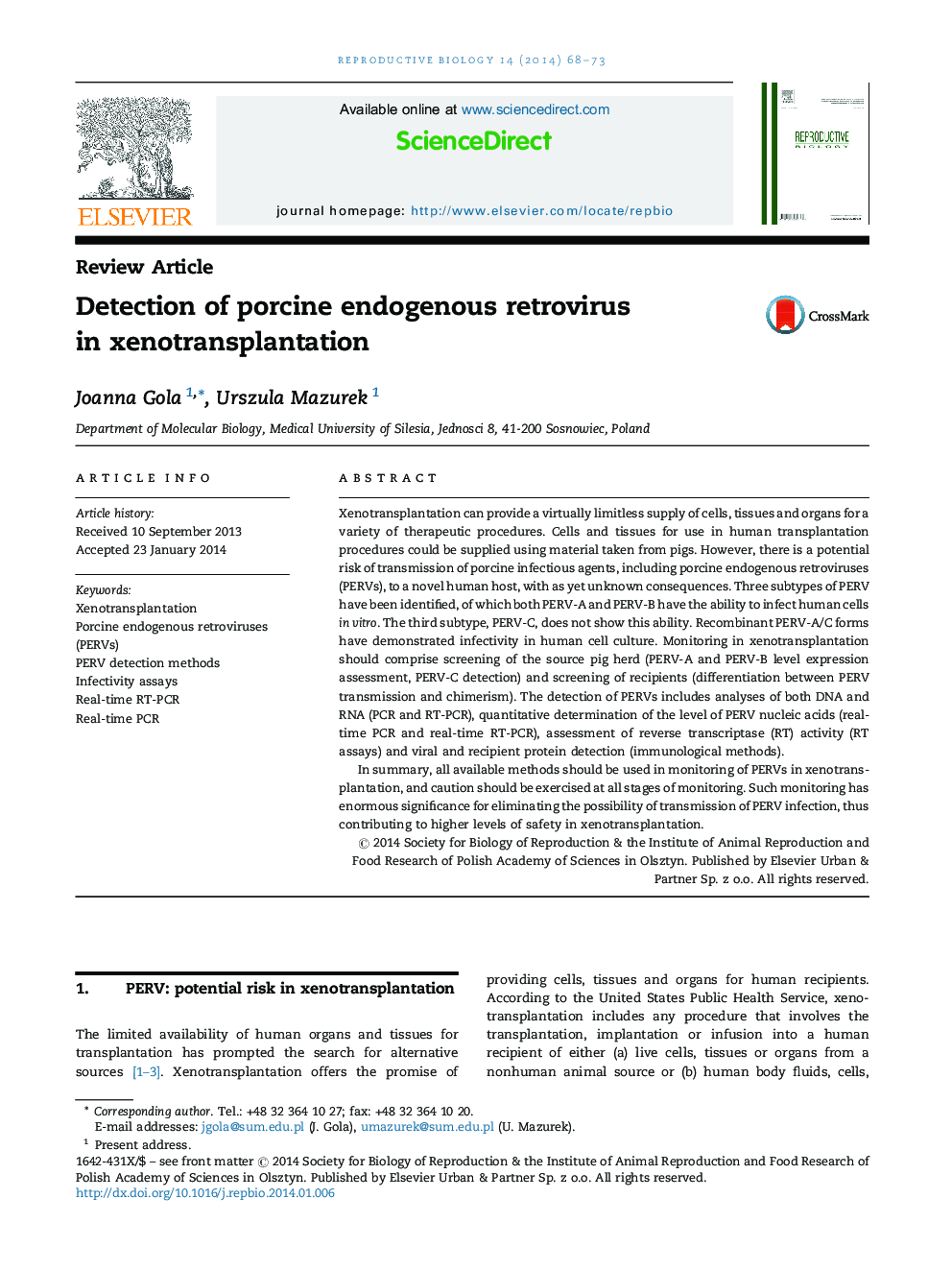| کد مقاله | کد نشریه | سال انتشار | مقاله انگلیسی | نسخه تمام متن |
|---|---|---|---|---|
| 2062500 | 1076611 | 2014 | 6 صفحه PDF | دانلود رایگان |
Xenotransplantation can provide a virtually limitless supply of cells, tissues and organs for a variety of therapeutic procedures. Cells and tissues for use in human transplantation procedures could be supplied using material taken from pigs. However, there is a potential risk of transmission of porcine infectious agents, including porcine endogenous retroviruses (PERVs), to a novel human host, with as yet unknown consequences. Three subtypes of PERV have been identified, of which both PERV-A and PERV-B have the ability to infect human cells in vitro. The third subtype, PERV-C, does not show this ability. Recombinant PERV-A/C forms have demonstrated infectivity in human cell culture. Monitoring in xenotransplantation should comprise screening of the source pig herd (PERV-A and PERV-B level expression assessment, PERV-C detection) and screening of recipients (differentiation between PERV transmission and chimerism). The detection of PERVs includes analyses of both DNA and RNA (PCR and RT-PCR), quantitative determination of the level of PERV nucleic acids (real-time PCR and real-time RT-PCR), assessment of reverse transcriptase (RT) activity (RT assays) and viral and recipient protein detection (immunological methods).In summary, all available methods should be used in monitoring of PERVs in xenotransplantation, and caution should be exercised at all stages of monitoring. Such monitoring has enormous significance for eliminating the possibility of transmission of PERV infection, thus contributing to higher levels of safety in xenotransplantation.
Journal: Reproductive Biology - Volume 14, Issue 1, March 2014, Pages 68–73
